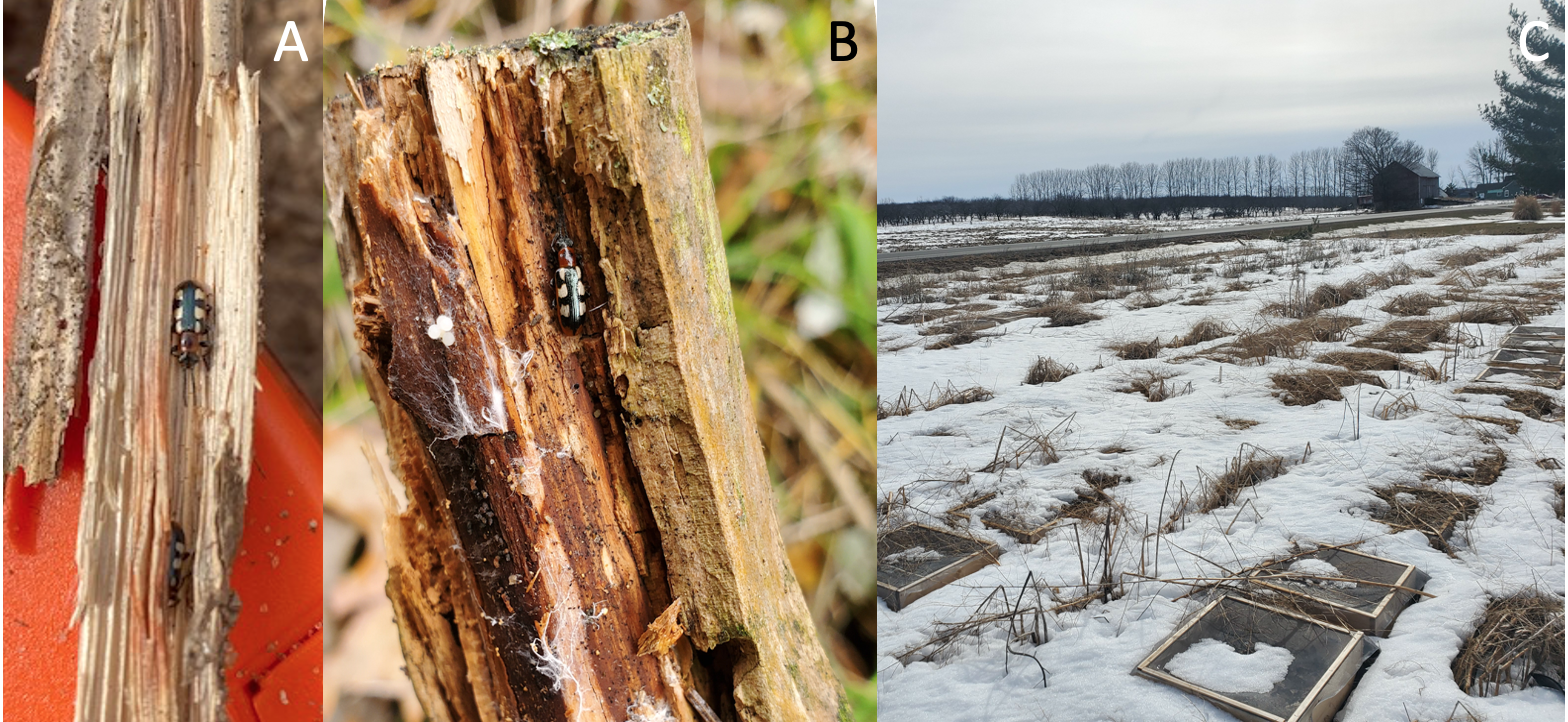Asparagus beetles: Where are they overwintering?
Learn more about where asparagus beetles go during winter and management implications.

Michigan’s asparagus industry has decades of experience managing the common asparagus beetle, but more recently this pest has been causing surprisingly difficult problems. On some well-managed farms, growers are having issues with asparagus beetle eggs on spears (Figure 1). These growers are making frequent insecticide applications to kill the beetles, but populations rebound quickly afterwards. Where exactly are these beetles coming from? In order to answer this question, it’s important to understand what these beetles are doing in the fall and throughout the upcoming winter.
Although it’s getting cooler during the fall, asparagus beetles are still active and seeking overwintering habitat all throughout and nearby Michigan asparagus fields. These are the same beetles that will emerge from overwintering when spring comes. The Vegetable Entomology Lab at Michigan State University is working with Michigan asparagus growers to discover where these beetles choose to overwinter. During winter farm visits, we checked tree bark, leaf litter and asparagus stalks to answer this question. We found beetles overwintering in many places, including decomposing asparagus stalks, under leaf litter and underneath tree bark (Figure 2). But just how many beetles are sheltering in these different places?

Based on data from winter 2019-2020, we found that some beetles overwinter in woodlots and weed margins around asparagus fields, which lines up with grower observations. We also found that a higher proportion of beetles overwinter within asparagus fields. So what’s happening within fields may be just as important as the types of trees that are nearby. How well do beetles survive in these different habitats?
Asparagus beetles undergo a physiological process to prepare their bodies to withstand freezing temperatures during winter. Temperatures can only get so low before beetles begin to die so beetles seek out shelter so they are protected as much as possible from freezing temperatures. Access to the right shelter could increase their survival into spring. We found that asparagus beetles that overwinter in deciduous leaves or old asparagus stalks survive at higher rates compared to pine needles and bark.
We are continuing our research into asparagus beetle overwintering to learn more this upcoming winter. We expect these results will lead to management recommendations in the future. Stay tuned to learn more about the research happening in the MSU Vegetable Entomology Lab and Michigan State University Extension!



 Print
Print Email
Email

